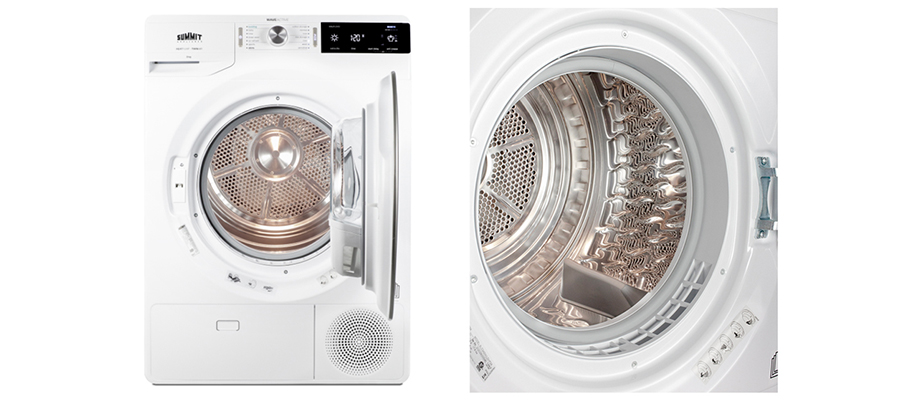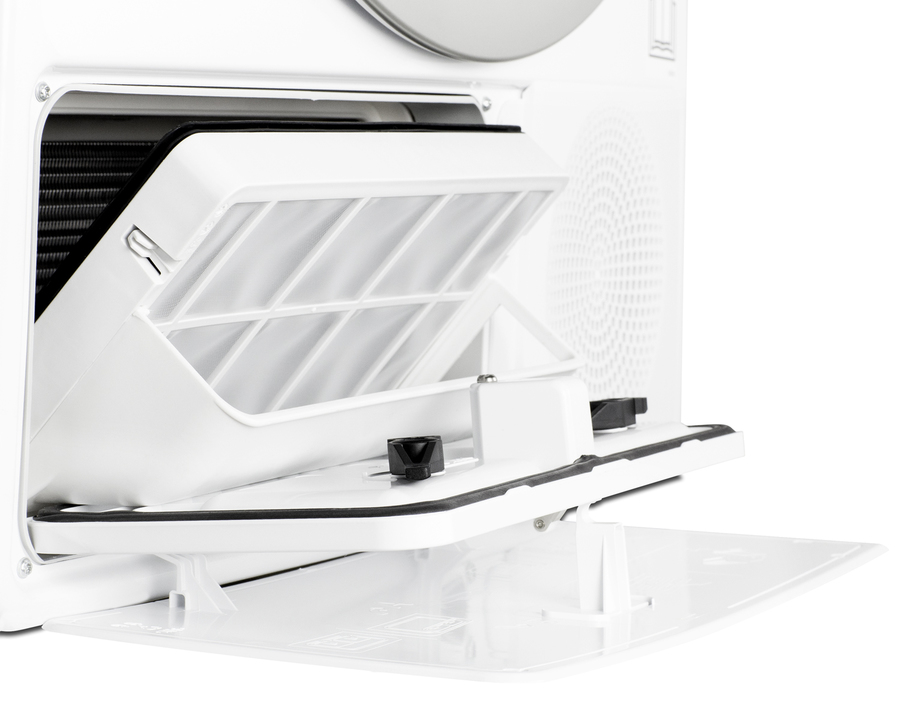The technology utilized for laundry appliances is constantly evolving, with new features being developed for the modern lifestyle and better designs for improved performance. One of the newer types of dryers now available in the marketplace is the heat pump option, a ventless option that offers the added benefits of easier placement and better efficiency.
Dryer Technology: Vented, Condenser, & Heat Pump
Vented Drying - The Originator
Traditionally, the gas or electric dryer you had in your apartment or home was a simple, but effective device. It dried your clothes using the following method:
-A motor rotated or tumbled the clothes within the drum
-A heater provided a supply of hot air
-A fan blew the hot air across the tumbling clothes.
The hot moist air was vented to the outside, replaced by room temperature air. Your clothes were dried quickly but used a lot of energy in doing so. Additionally, the requirement of a vent to remove the hot air made this process limited to those without that availability, which spurred a new innovation in dryer technology - the condenser dryer.
Condenser Dryer - Convenience & Flexibility
The condensing dryer utilizes a drying system that has no exhaust to the outside but instead uses a heat exchanger (called a condenser) to separate the moisture from the hot air (most combo washer/dryers utilize this method). The moisture is generally discharged to the same drain as the washer, and the hot air is recirculated. Drying times are longer (the recirculated air has some moisture left in it) but the energy costs are significantly lower.


